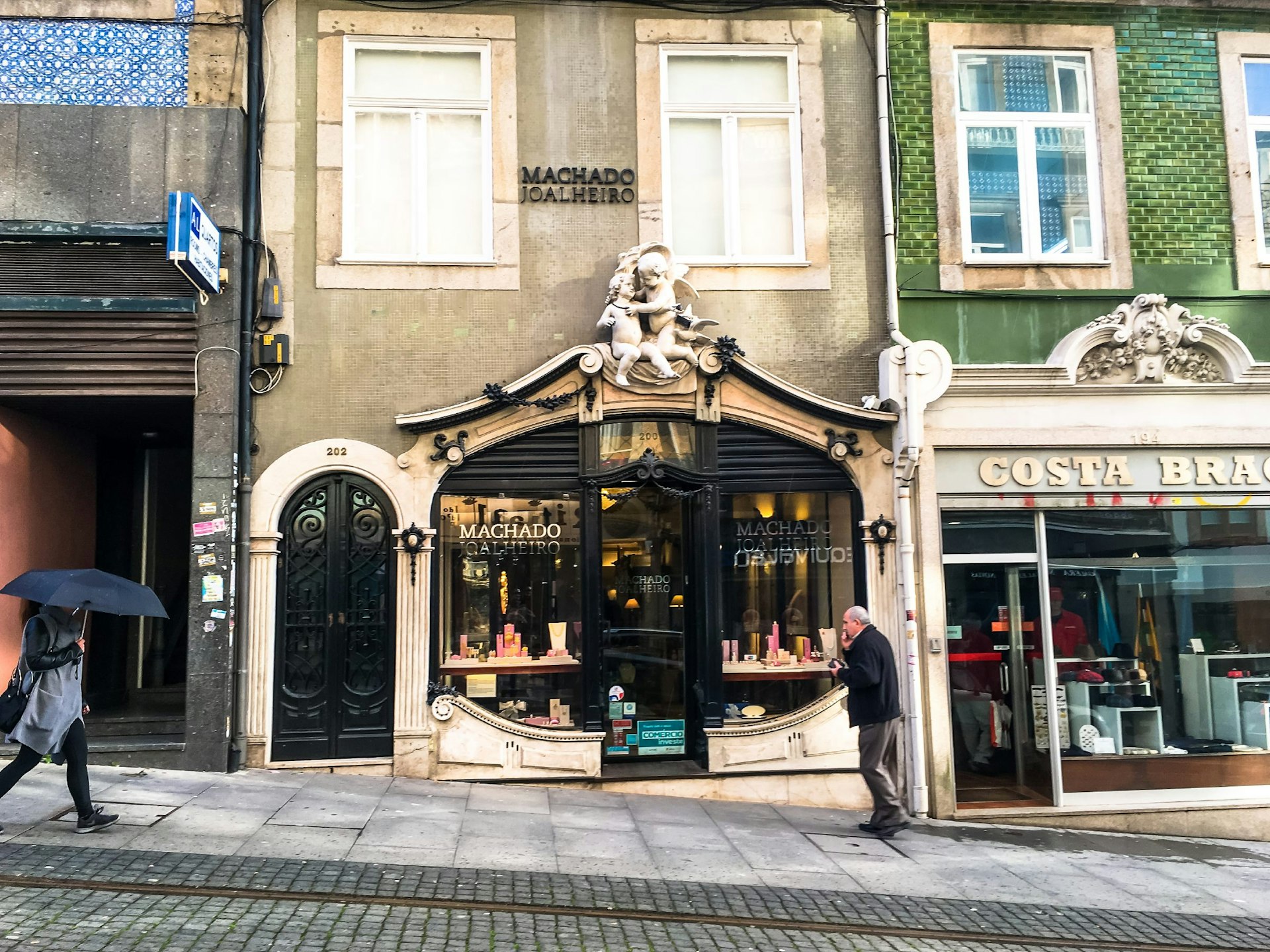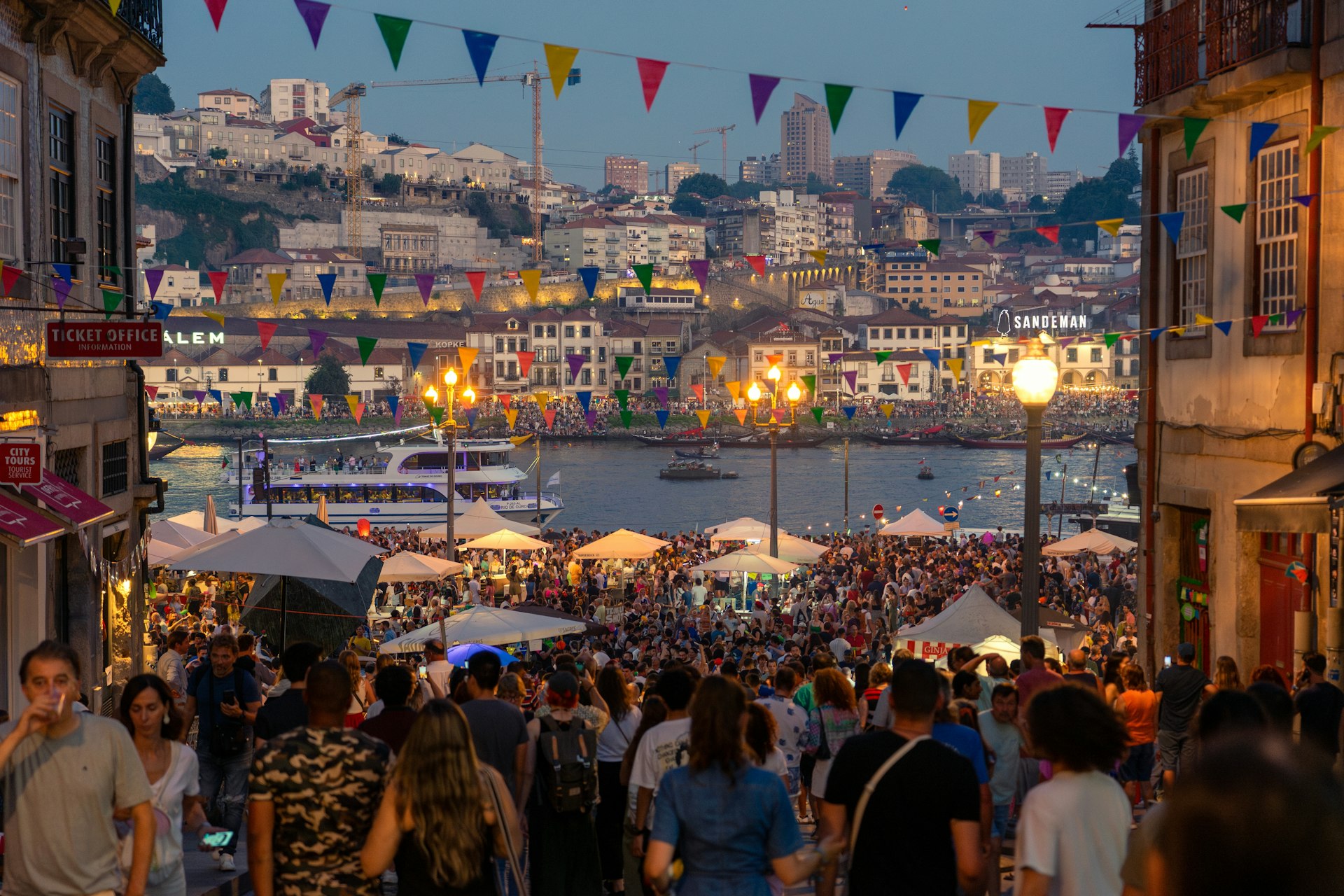Whether for a long weekend or a longer stint to write that best-selling novel, Porto, Portugal, fascinates.
Here, you’ll find cutting-edge art, medieval streetscapes and an overflowing bounty of great food and wine. While it’s a fairly easygoing place, you can help ensure your trip is a success by learning a few essentials, from how to get around on public transport to what to wear for the weather.
For example: keep in mind that asking someone if they are a tripe-eater is OK…but saying gracias is generally not.
Read on for these and other tips that will make your next trip to Porto a success.
1. Don’t drive in the center of town
Porto’s narrow, one-way streets, heavy traffic and challenging parking can be quite nerve-wracking, even for local drivers. Add in hills, tram tracks, lots of pedestrians and bikes, plus the odd construction zone with detours, and you have the makings of a stressful day indeed. If you’re arriving by car, it’s best to park on the outskirts and take public transport into the center of town.
2. Pick your neighborhood well in advance
Near the riverfront, Ribeira is a popular choice for its historic architecture and lively dining and drinking options. Yet given Porto’s newfound popularity, it can feel a bit touristy and places tend to book up months in advance. Just up from Ribeira, the neighborhood of Aliados puts you in the heart of the city center and has great lodging and dining choices.
As with Ribeira, you’ll have to move fast to book your preferred spot. For more of a seaside feel, consider Foz do Douro, which lies near beaches on the Atlantic and is an easy 40-minute hop (by bus or tram) from the center.
3. Make restaurant reservations in advance
Porto has some truly excellent restaurants, including over a dozen places listed in the Michelin guide. If you hope to enjoy a meal at Pedro Lemos, Antiqvvm or one of the city’s other celebrated restaurants, reserve several weeks in advance – or at least one month ahead if booking during the high season (May to September).
4. Get an Andante Card and travel on public transportation
Porto has an efficient public transportation network, with six Metro lines that link districts across town. You can also take the Metro out to the beach, and directly to and from the airport. The network also includes buses, trams and even a funicular. For convenience, purchase an Andante Card (€0.60), then load it with credit (“titulos”) for use on the Metro and buses.
Trams have a special rate (€3.50/€6 one-way/return) and tickets can be purchased on board. The Funicular dos Guindais also requires its own ticket (€3.50 one-way), and has a short but super-fun run from the riverfront near the base of the iconic Luís I bridge up to Rua Augusto Rosa near the Igreja de Santa Clara.

5. Don’t forget your swimsuit
Porto’s western neighborhoods border the Atlantic, with many wide sandy beaches easily reached by Metro or bus. The water is chilly – but a welcome relief on the hottest of summer days when temperatures can reach upward of 33°C (93°F).
6. Pack reliable footwear and a smart-casual wardrobe
Porto’s hills and uneven pavements will give your legs a workout. Make sure you bring good walking shoes so you don’t twist an ankle. Save the heels for dining out and nightclubs.
Footwear aside, locals tend to dress in smart-casual wear. Shorts are fine for the beach – but if you wear them around town, you’ll quickly be labeled a tourist. At nicer restaurants, you’ll want to dress up a bit.
7. Bring a raincoat and scarf, and prepare for changeable weather
While on the cold Atlantic, Porto has a Mediterranean-like climate, with warm, dry summers and cooler, wetter winters. Even if you visit in July or August, you should bring a rain jacket for the occasional shower. In winter, count on a few wet days followed by pleasant, sunny skies. Whenever you come, bring layers, as the days can start off chilly and then warm up considerably. Porto also catches some strong breezes off the water, so always pack a scarf.

8. Fork into a francesinha
The francesinha is to Porto what poutine is to Québec. It’s a much-loved if decidedly un-fancy dish made of thick bread stuffed with ham, linguiça (Portuguese sausage), steak and cheese, then topped with yet more cheese (this time melted) and a mildly spicy sauce (made of tomatoes and beer), with perhaps a fried egg thrown in for good, cholesterol-spiking measure.
Try it in Porto when you have the chance, as you’ll rarely find the francesinha outside of the city. And make sure to eat light before partaking of this deliciously high-calorie meal. Cafe Santiago serves up one of the best.
9. Try the tripas
Calling someone a tripe eater (tripeiro) might seem like a fine prelude to a fistfight. Yet in Porto, locals have adopted the moniker as their own. Why, you might ask? Because of the local love for tripa (tripe) – in particular, the somewhat enigmatically named dish tripas à modo do Porto (Porto-style tripe).
Carnivores will delight in this stew-like delicacy made from veal tripe, white beans, sausage, carrots, paprika and various other spices. Nearly every tripeiro has their own favorite place to eat the signature dish – though you can’t go wrong with the authentic, home-style cooking at O Buraco.
10. Prepare to tip (or not)
As in many other parts of Portugal, some Porto locals don’t tip at all, or simply round up when paying for a meal or a taxi ride. In more tourist-oriented establishments a tip is more common – usually around 10% – and may even be pre-added as a service charge.
Tipping is not expected in cafes or bars. However, if you’re in a high-end place, you should plan on tipping, along the lines of €1–2 per specialty cocktail.
11. Learn how to say “bom dia” and other essential Portuguese phrases
Many people speak English in Porto, especially those who work in hotels, restaurants and shops. Still, learning a few phrases in Portuguese can only enhance your stay. If nothing else, locals appreciate the effort to speak their language, even if you botch the famously tricky pronunciation. When entering a room, it’s polite to say “bom dia” (good day) or “boa tarde” (good afternoon) to those around you. “Muito obrigada” (many thanks) or “muito obrigado” (if you’re a man) will also earn you respect.

12. Don’t assume you can speak Spanish
If you speak Spanish, perhaps you’re thinking that you can breeze by in Porto. Portuguese and Spanish, after all, are related (um, so are English and Dutch), and the two countries have a bit of shared history that sets them apart from others in Europe.
Spanish, however, is not widely spoken. In fact, more Portuguese speak English (around 30% of the population) or even French (15%) than Spanish (10%). Some locals might take offense if you jump straight into Spanish, so you’re better off sticking to English – perhaps after trying out some Portuguese first.
13. Be mindful of petty thievery
Porto is generally a safe city, and the crime rate is low. Still, pickpocketing and bag snatching are the main concerns to keep in mind, especially when traveling on the trams and Metro. Avoid moving around during the crowded peak times, and don’t zone out on your phone wherever you are. At night, be cautious walking around the dark alleys of Ribeira and near the São Bento train station. You’re better off taking a taxi.
This article was first published Jun 27, 2022 and updated Jun 19, 2024.
